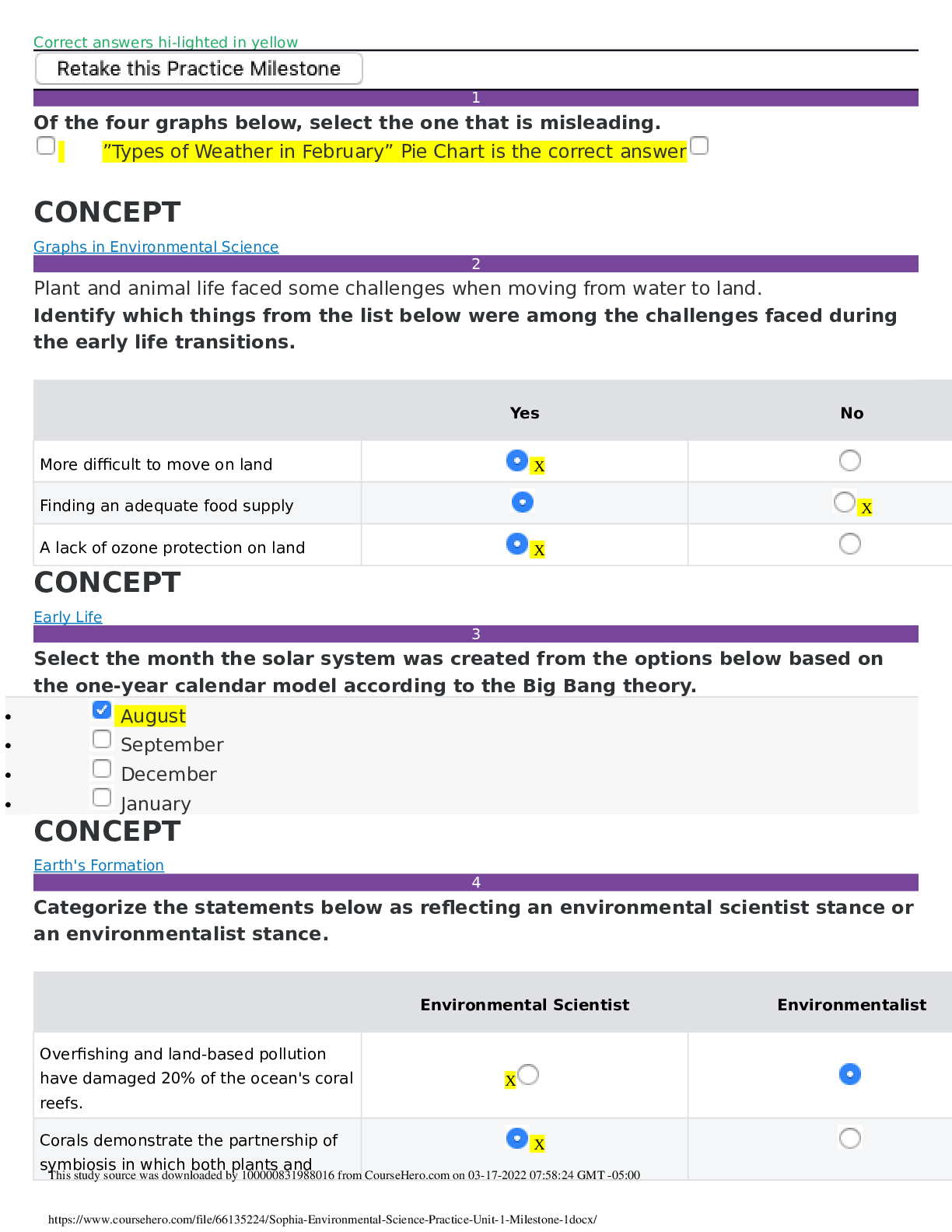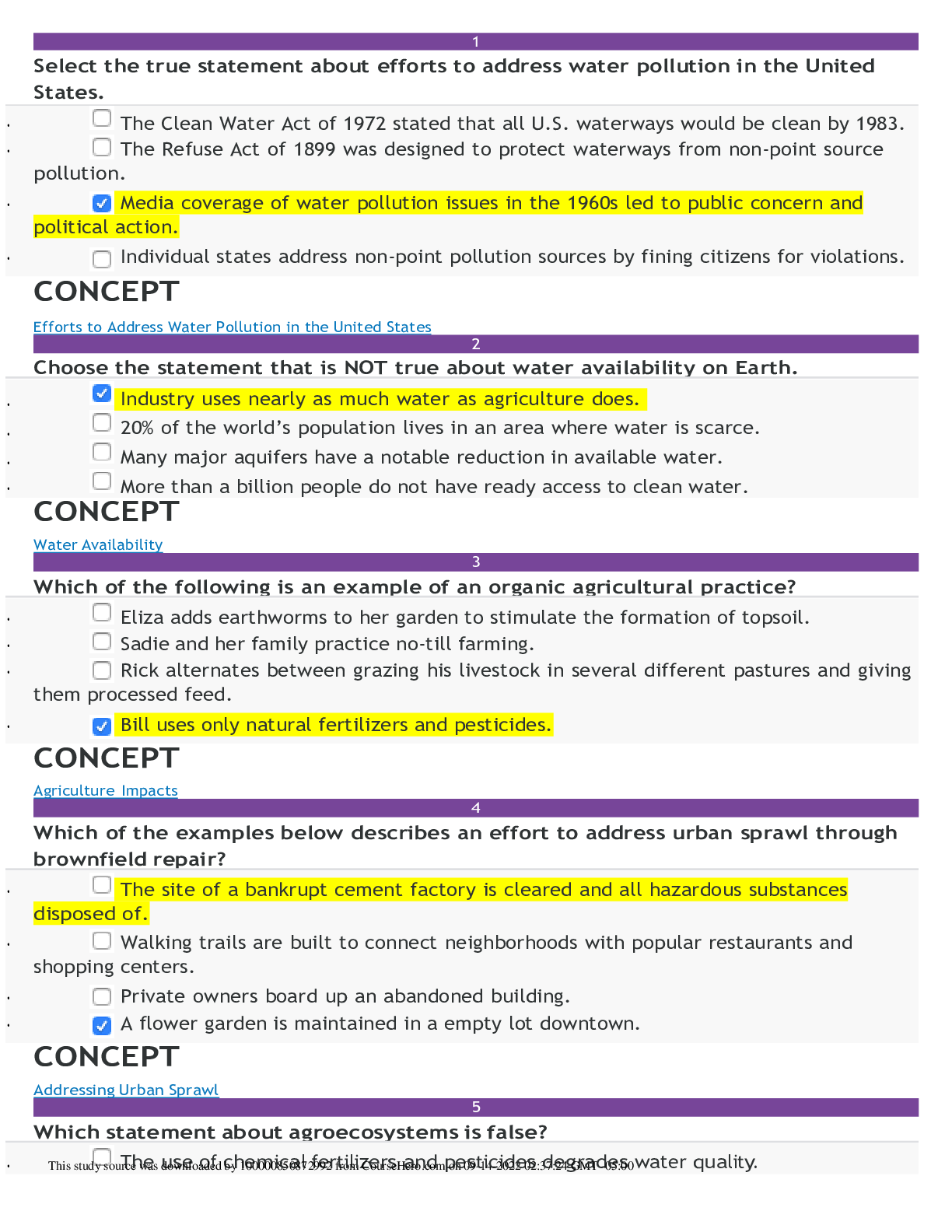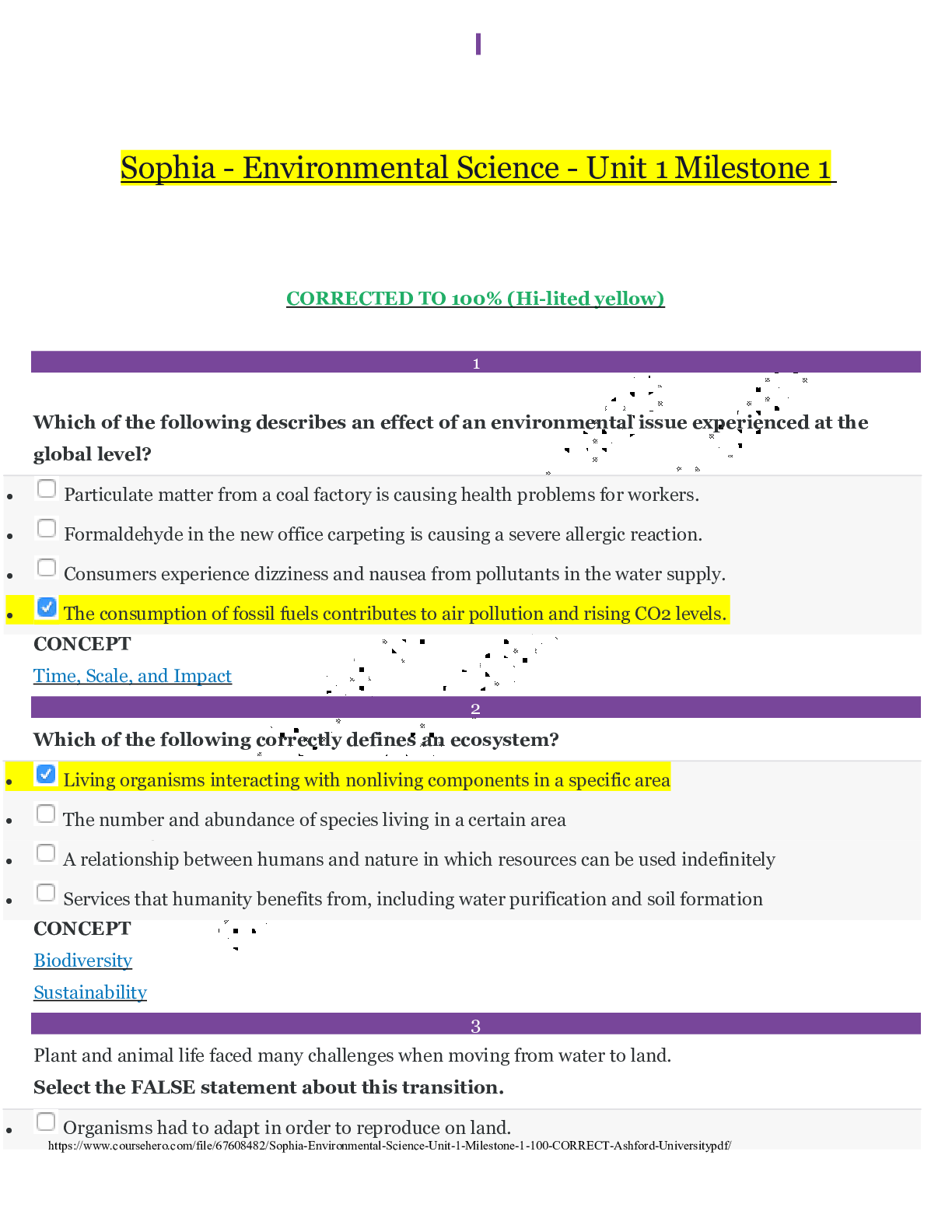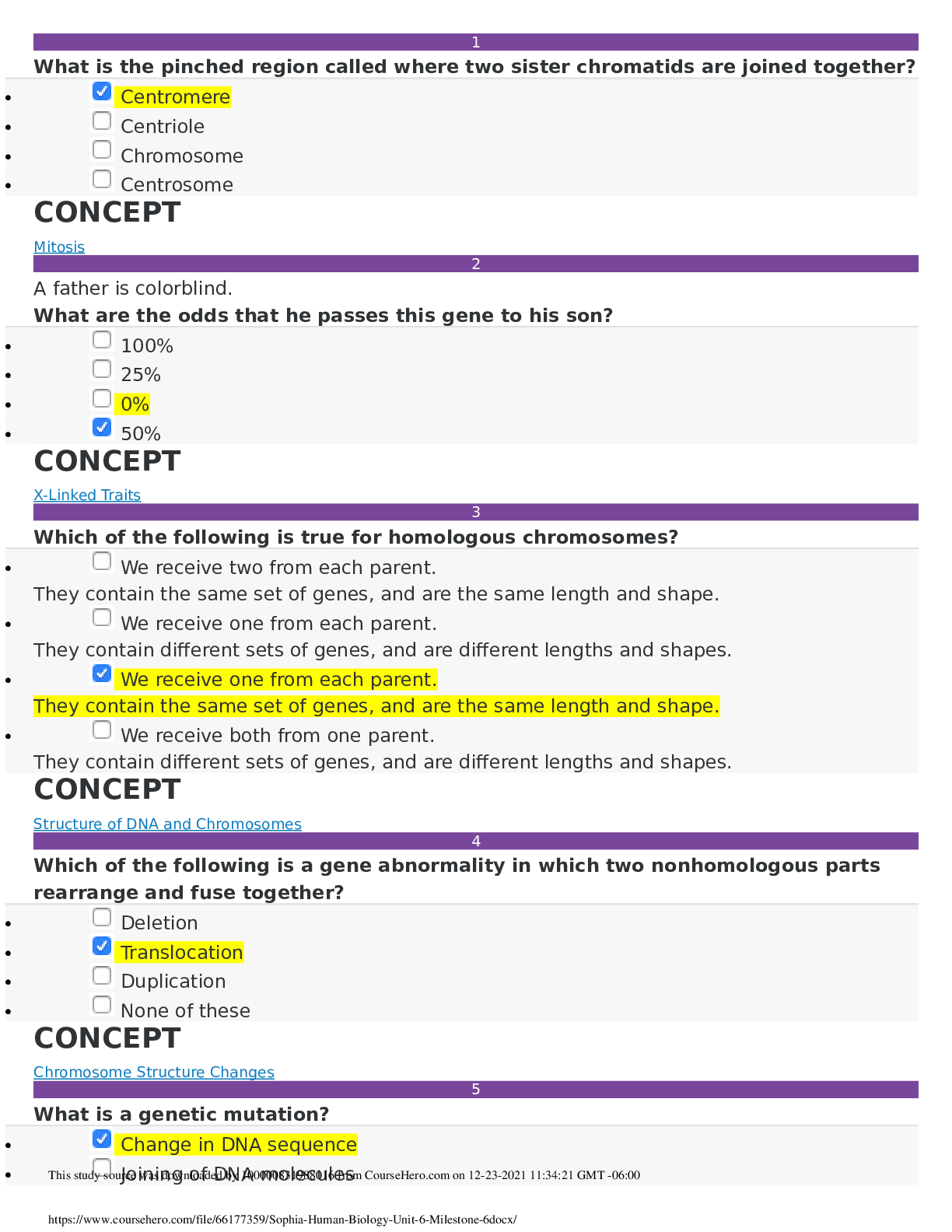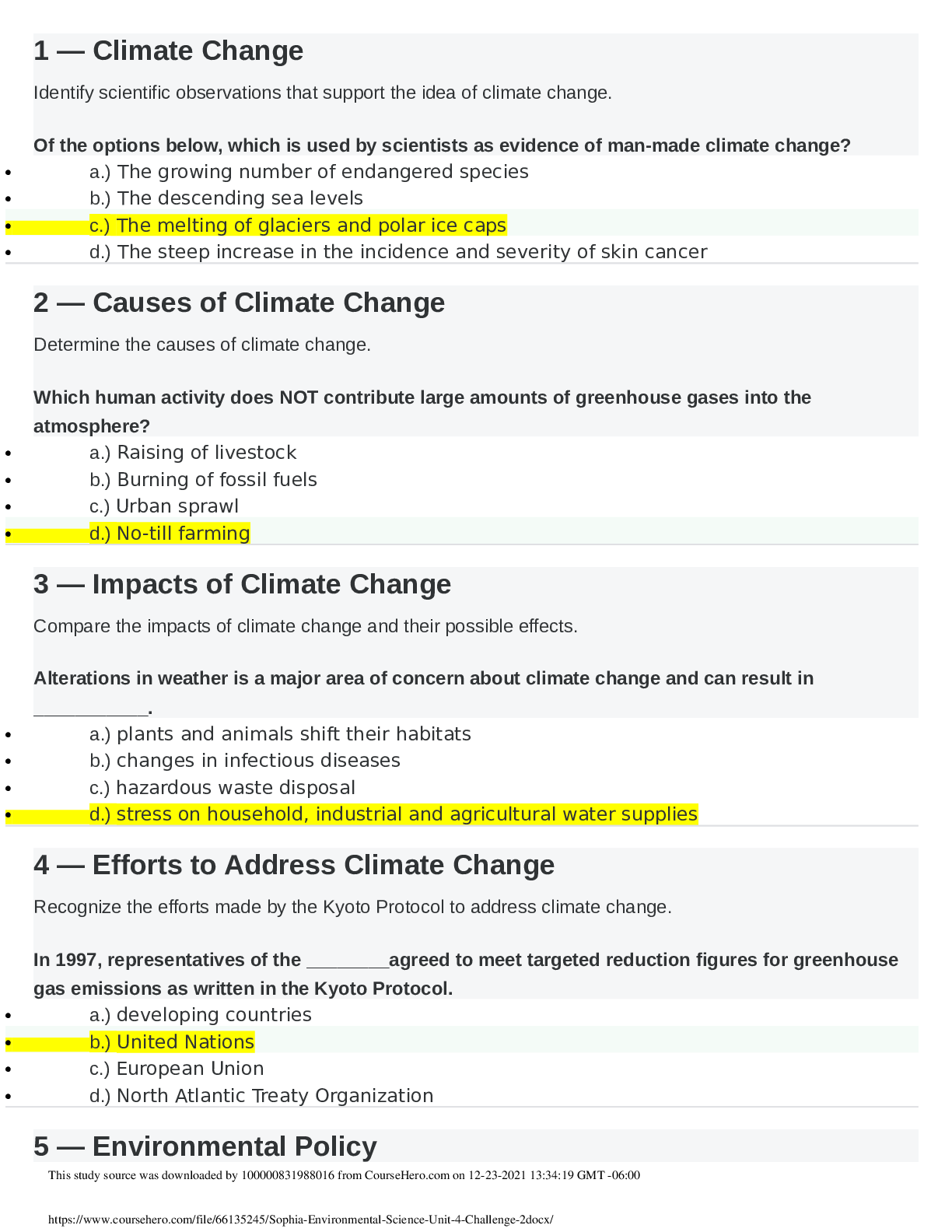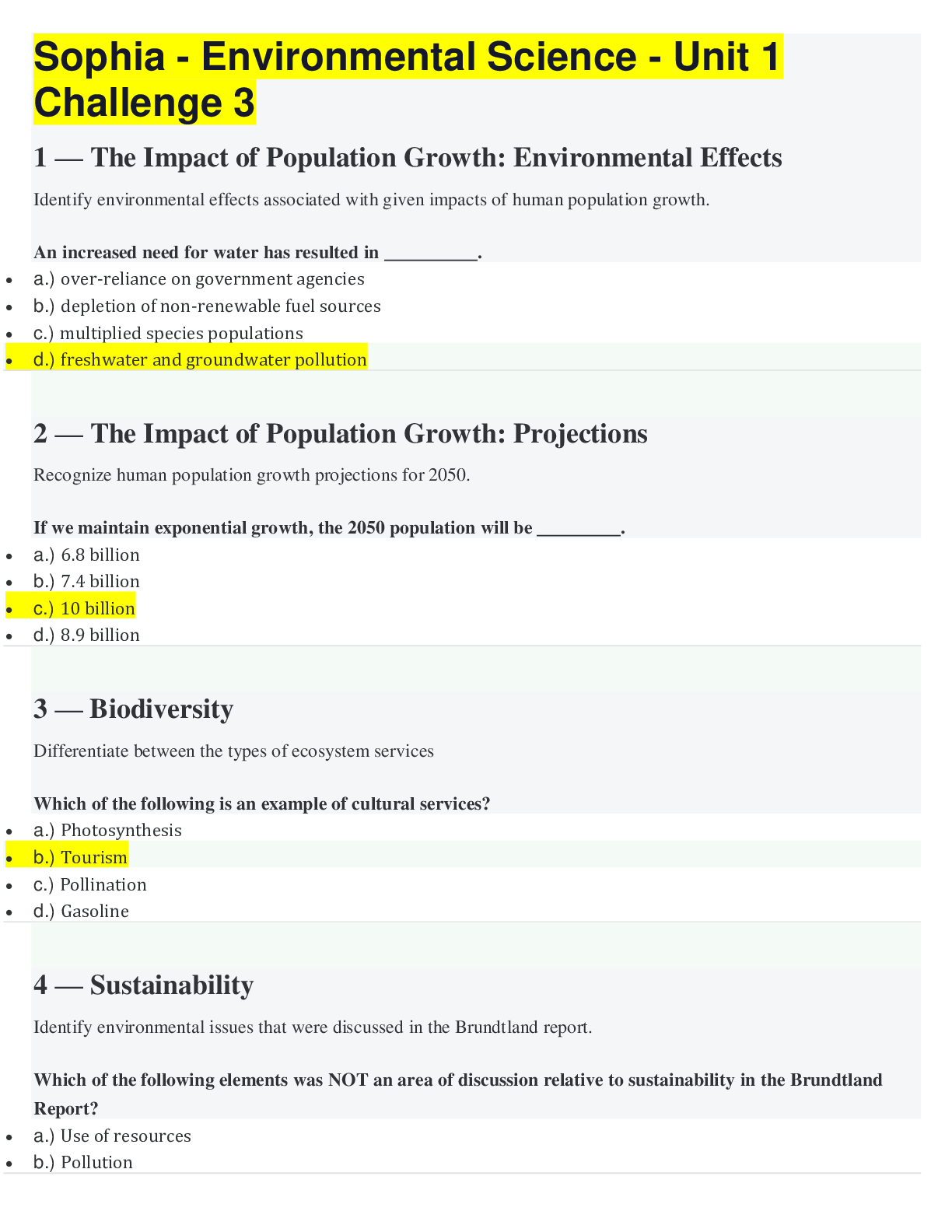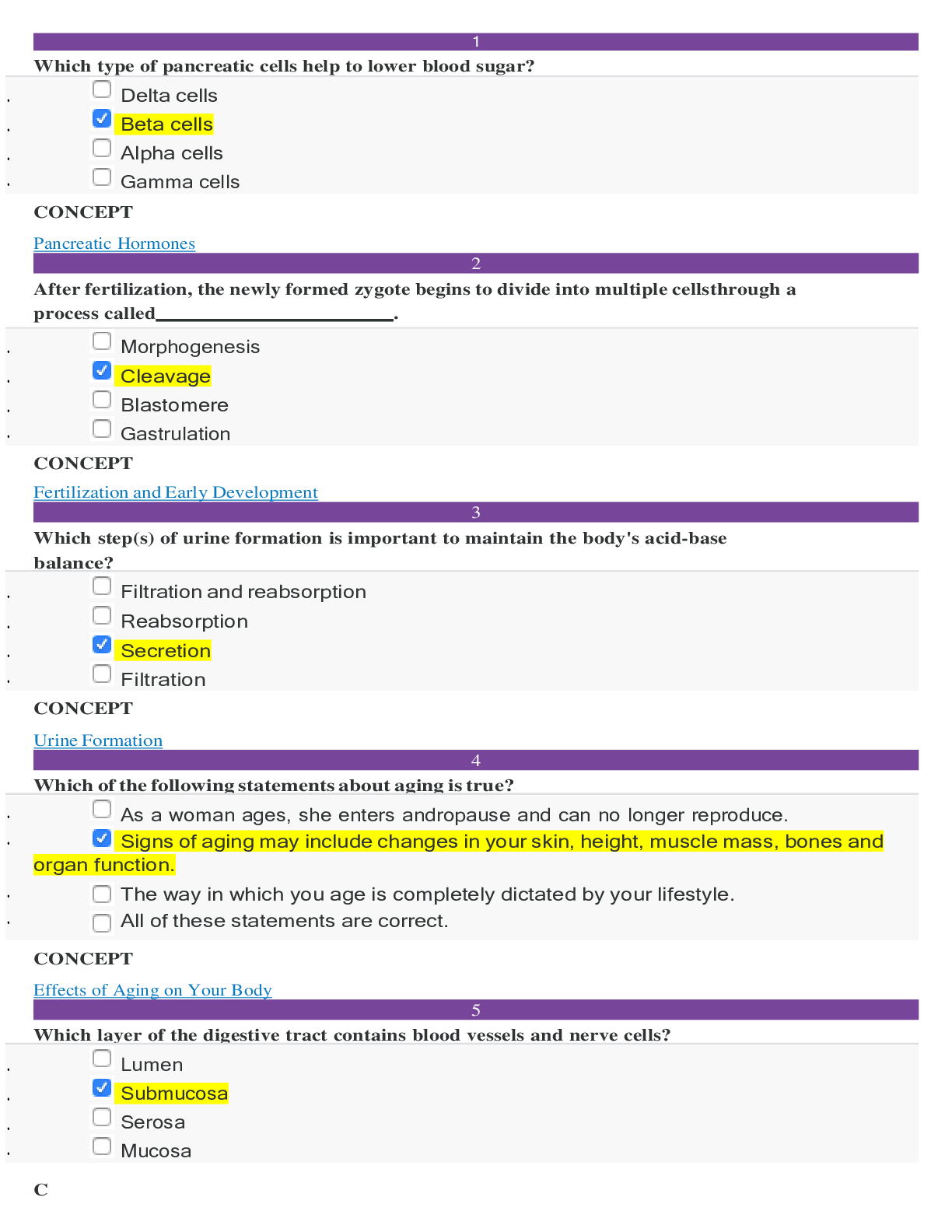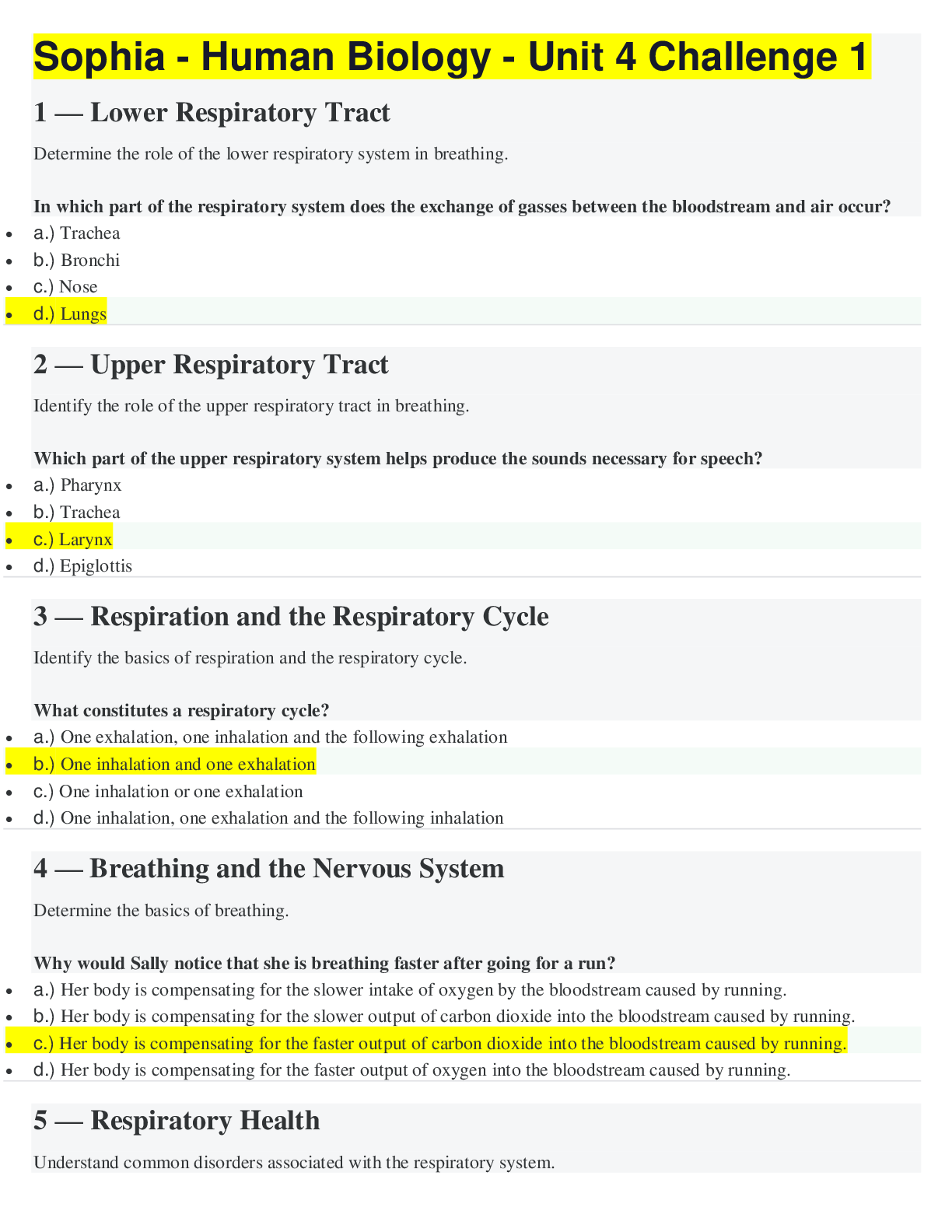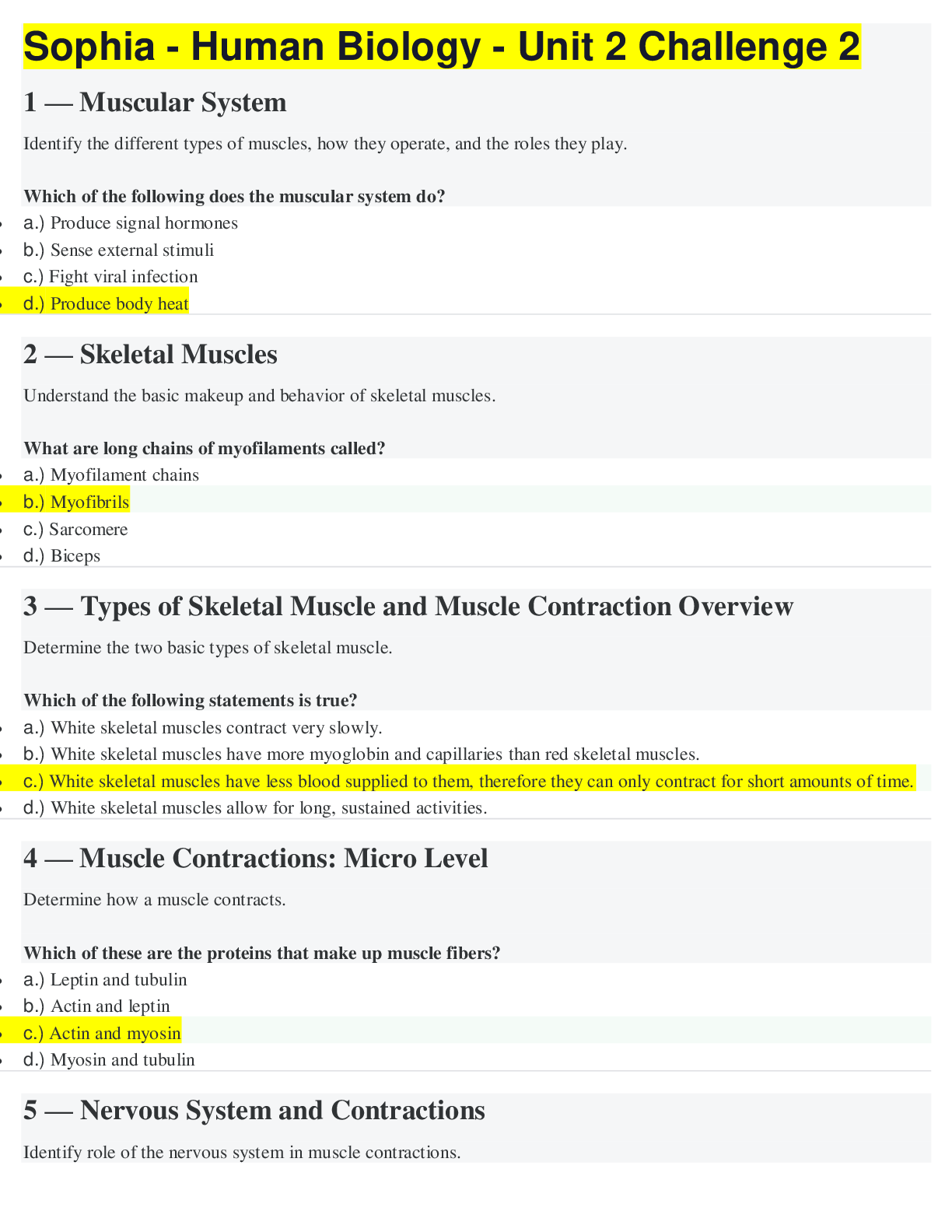Biology > EXAM > Ashford University - SOPHIA PATHWAY Sophia - Environmental Science - Unit 2 Challenge 2/Verified Ans (All)
Ashford University - SOPHIA PATHWAY Sophia - Environmental Science - Unit 2 Challenge 2/Verified Answers.
Document Content and Description Below
Sophia - Environmental Science - Unit 2 Challenge 2 1 — Ecology Identify emergent properties at different levels of the organism organization. Which of the following is an emergent property at th... e ecosystem level of organization? • a.) The relative abundance of species • b.) The differences between organisms within a species • c.) The types of ecosystems • d.) The interactions between communities 2 — Population Ecology: Exponential vs. Logistic Growth Models Differentiate between exponential and logistic population growth models. Which of the following characteristics is representative of the exponential population growth model? • a.) This growth model notes the population size that an ecosystem can sustainably support. • b.) This growth model produces an S-shaped line. • c.) This growth model takes into account limited resources. • d.) This growth model may not always be realistic. 3 — Population Ecology: Carrying Capacity Determine the carrying capacity of a species from a given graph. On the graph shown here, the carrying capacity for black bears is less than ___________. The first time the black bear population reached carrying capacity was in the year __________. • a.) 20; 1990 • b.) 5; 1995 • c.) 10; 1985 • d.) 15; 2000 4 — Community Ecology: Species Interactions Identify the types of species interactions. Which of the following is an example of predation? • a.) Two species of barnacles vie for living space on a rocky shore. • b.) Algae lives on a crab’s back and its color camouflages the crab. • c.) The bat-eared fox develops extra teeth and oversized ears. • d.) Hyenas chase and kill a small gazelle. 5 — Community Ecology: Ecological Succession Differentiate between primary and secondary succession. Which of the following characteristics is associated with secondary succession? • a.) New saplings of lodgepole pine begin to grow on land scarred by a recent fire. • b.) Moss quickly establishes itself on land recently exposed by glacial retreat. • c.) Algae and fungus start to grow on bare rock. • d.) Foliage begins to grow on new land created by cooled lava. 6 — Native and Non-Native Species: Characteristics Determine the characteristics of native, non-native, and invasive species. Which of the following examples corresponds with native species? • a.) Asian carp were brought to the U.S. to eat excess algae from ponds but found their way into rivers; the fish eat plankton, the diet of many smaller fish, and can grow to be 100 pounds. • b.) Originally from Japan, Kudzu was introduced to the U.S. as a fast-growing vine to curb soil erosion; it has spread across the South and covers about 150,000 acres each year. • c.) Many birds in New Zealand evolved to have very small or completely useless wings; they had no need to fly because there were no mammals to prey on them. • d.) Chickens were domesticated in Southeast Asia around 5,400 BC; they were first brought to the Americas around 3,300 years ago. 7 — Native and Non-Native Species: Impacts of Invasive Species Identify the impacts of invasive species. An invasive species can ___________. • a.) threaten or endanger native species • b.) boost ecosystem health and productivity • c.) increase agriculture health and botanical gardens • d.) have many natural predators, competitors, parasites or diseases 8 — Ecosystems Ecology Recognize an organism as either a producer, consumer, or decomposer. Which of the following organisms is a producer? • a.) An earthworm • b.) A willow tree • c.) A jackrabbit • d.) A leopard seal 9 — Food Chains and Food Webs: Energy Determine how energy is passed from one level to the next in a trophic pyramid. In an energy pyramid, which way does energy transfer? • a.) Energy transfers from top to bottom and increases at each level. • b.) Energy transfers from bottom to top and increases at each level. • c.) Energy transfers from bottom to top and decreases at each level. • d.) Energy transfers from top to bottom and decreases at each level. 10 — Food Chains and Food Webs: Order Identify the correct food chain order. Beginning at the first trophic level, which of the following answer choices shows the correct food chain order? • a.) Maple leaf, Cricket, Lizard, Fox, Fungi • b.) Fox, Cricket, Maple leaf, Lizard, Fungi • c.) Fungi, Fox, Lizard, Cricket, Maple Leaf • d.) Cricket, Lizard, Fox, Fungi, Maple Leaf [Show More]
Last updated: 1 year ago
Preview 1 out of 3 pages
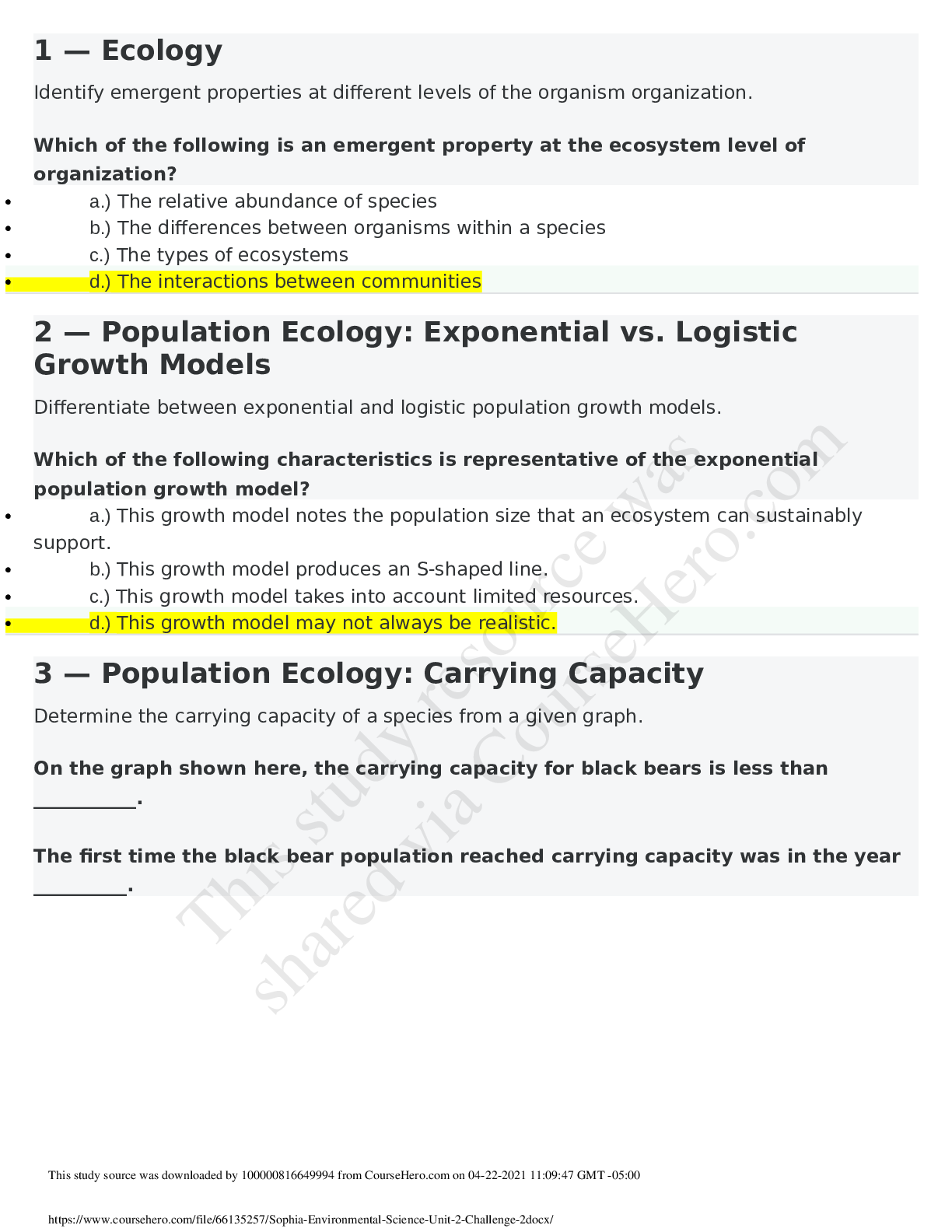
Reviews( 0 )
Document information
Connected school, study & course
About the document
Uploaded On
Sep 04, 2020
Number of pages
3
Written in
Additional information
This document has been written for:
Uploaded
Sep 04, 2020
Downloads
1
Views
99

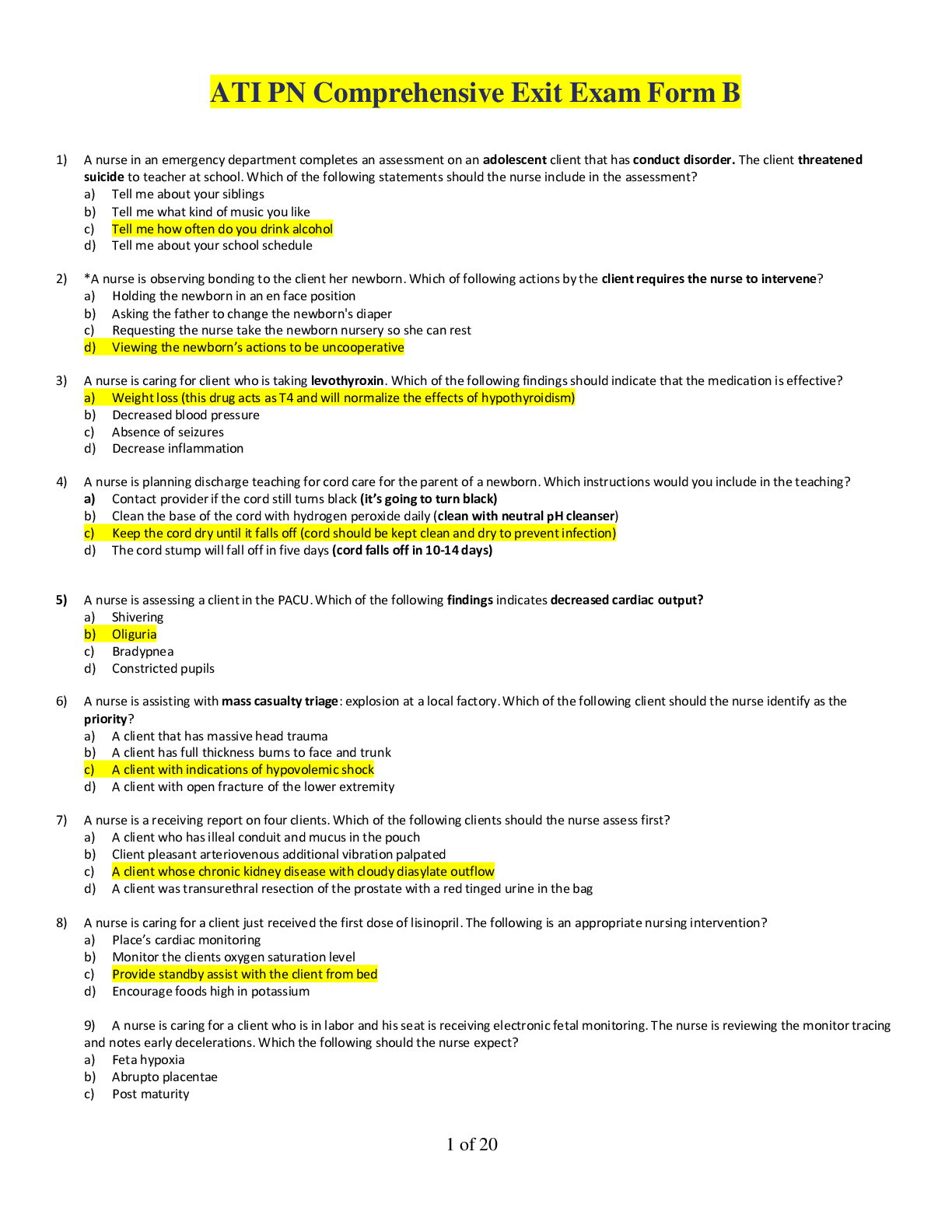
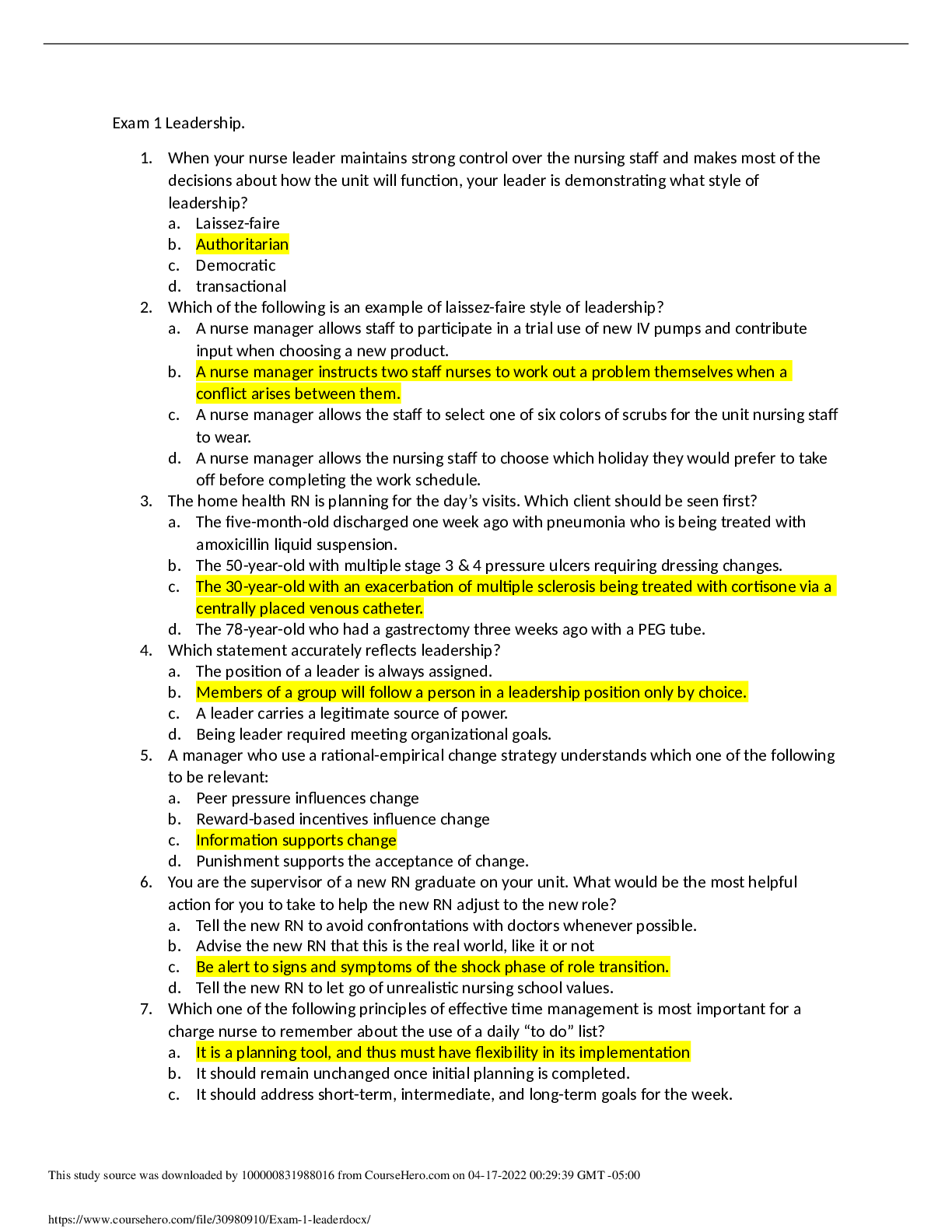


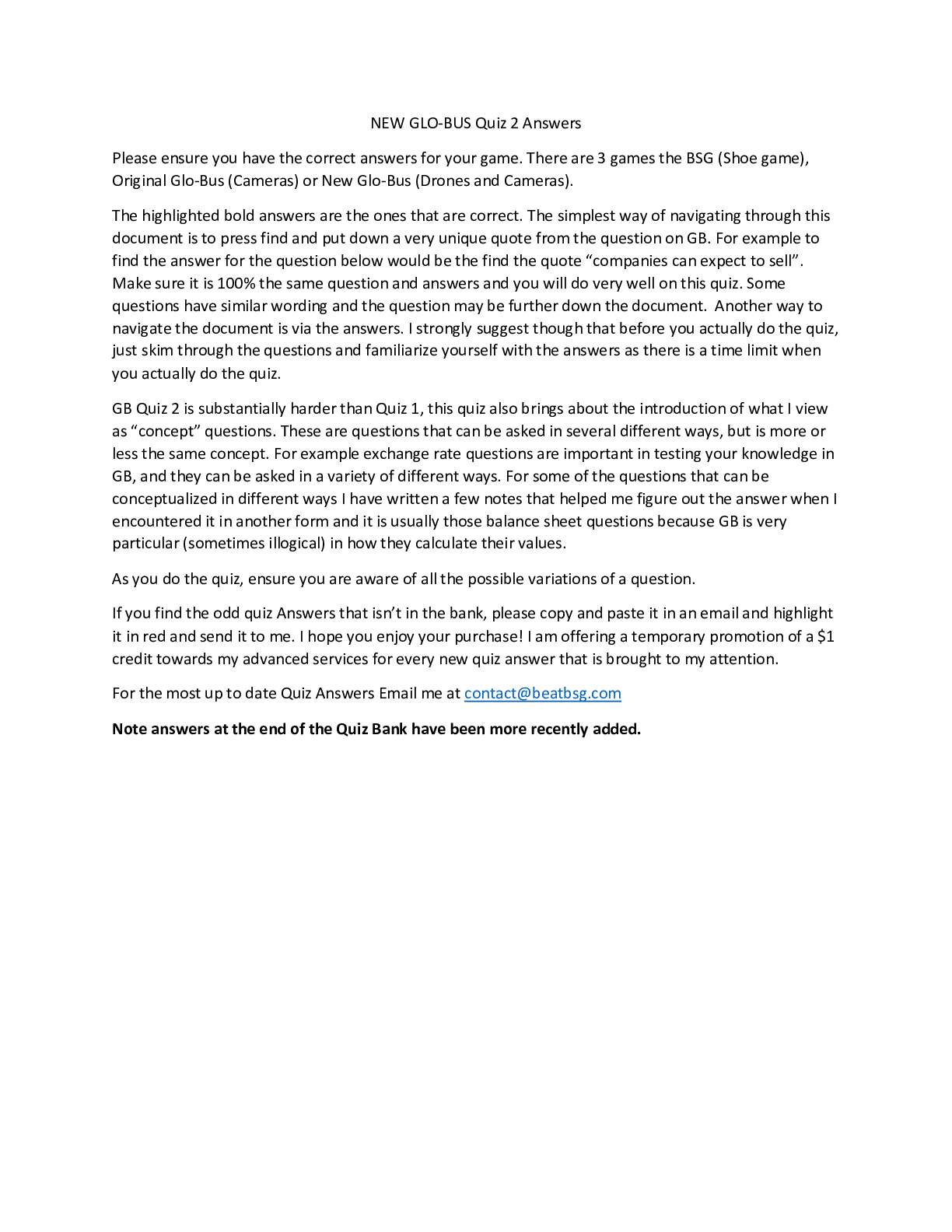
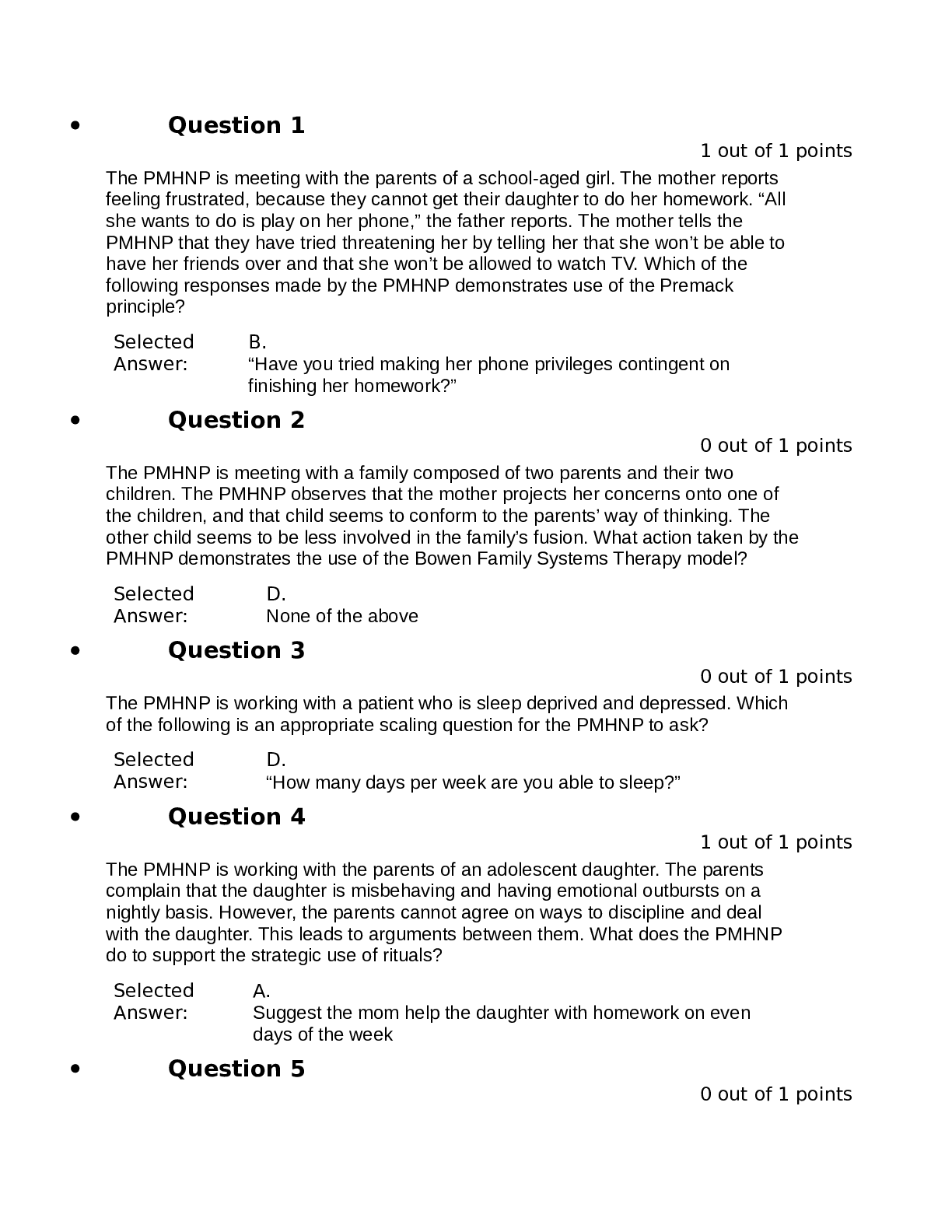
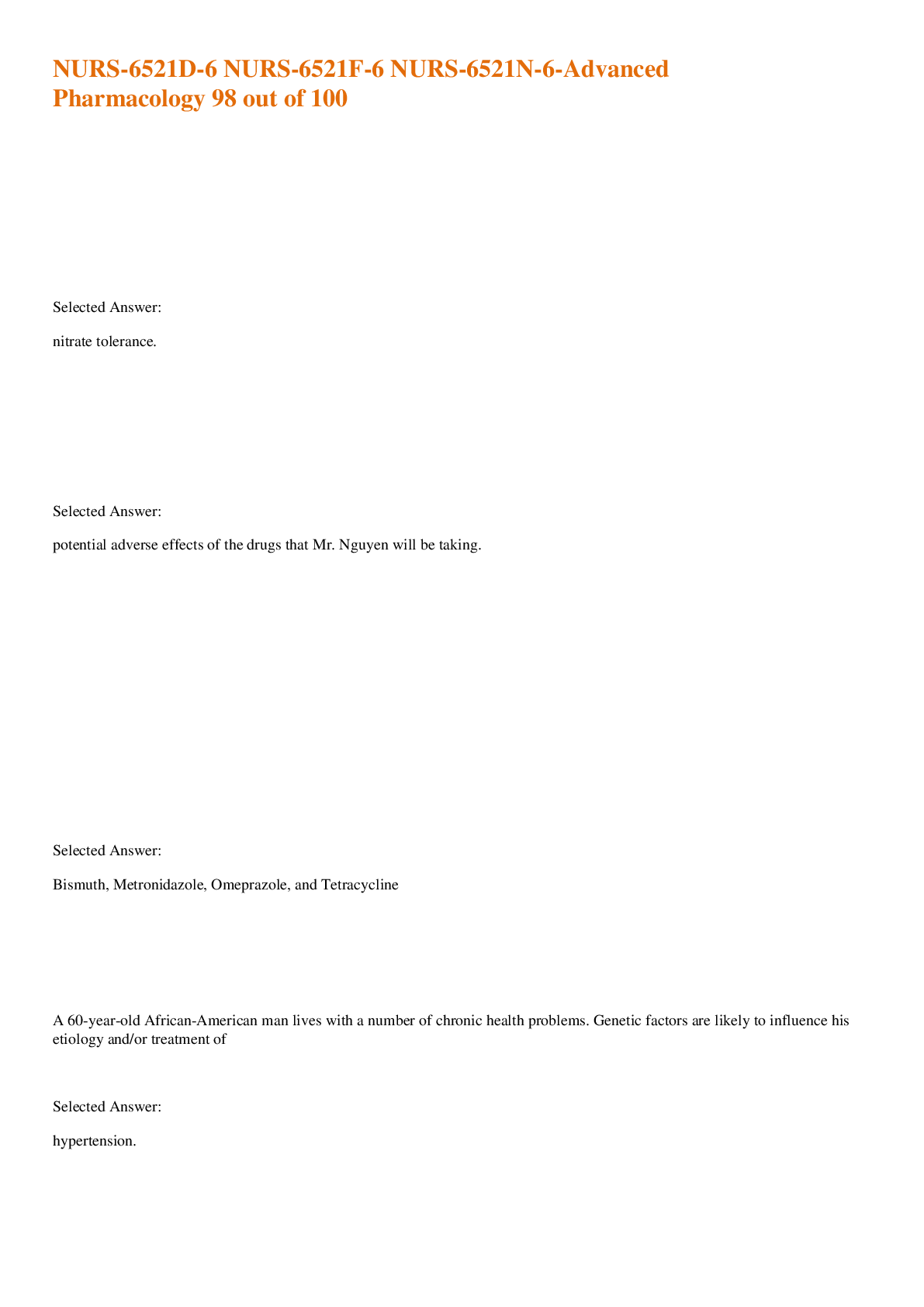
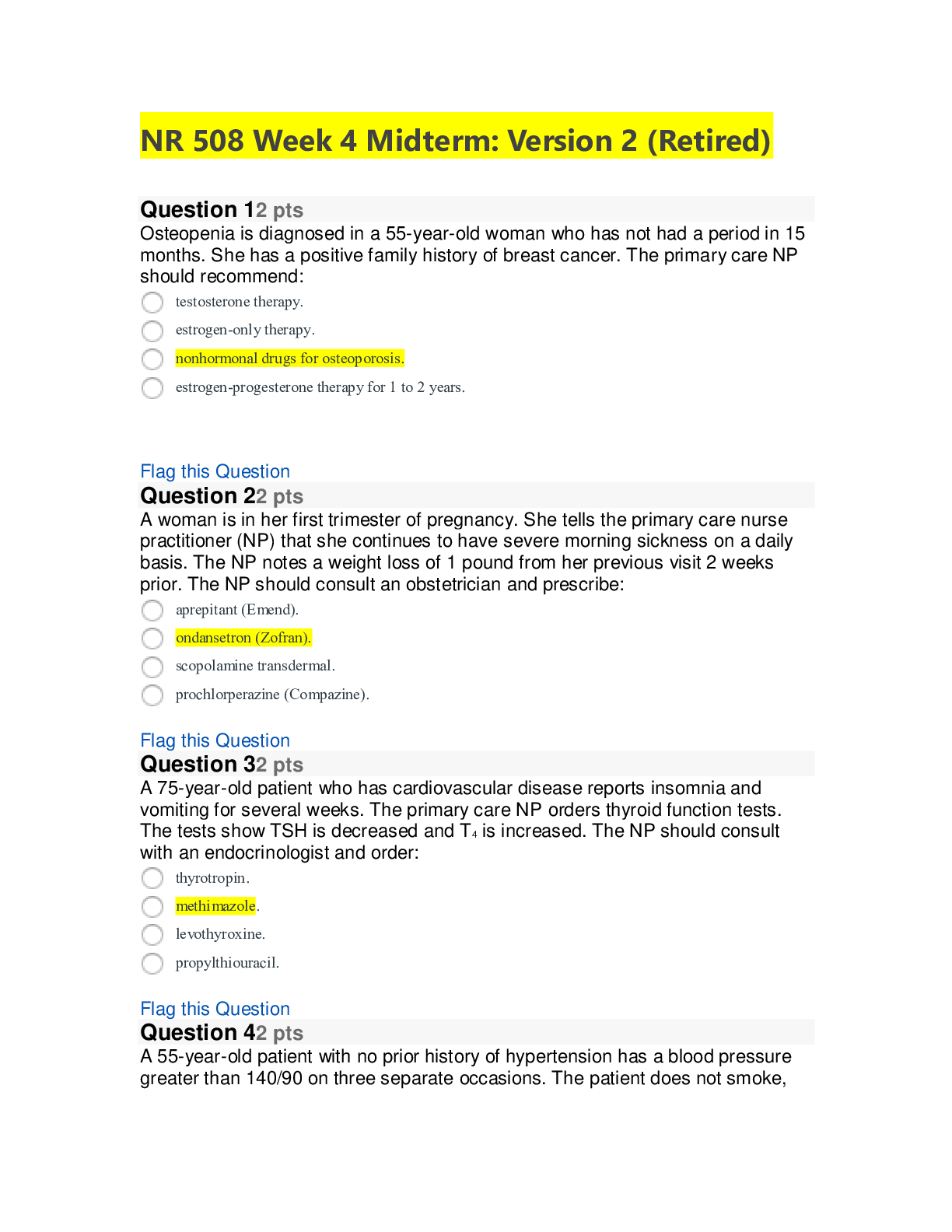



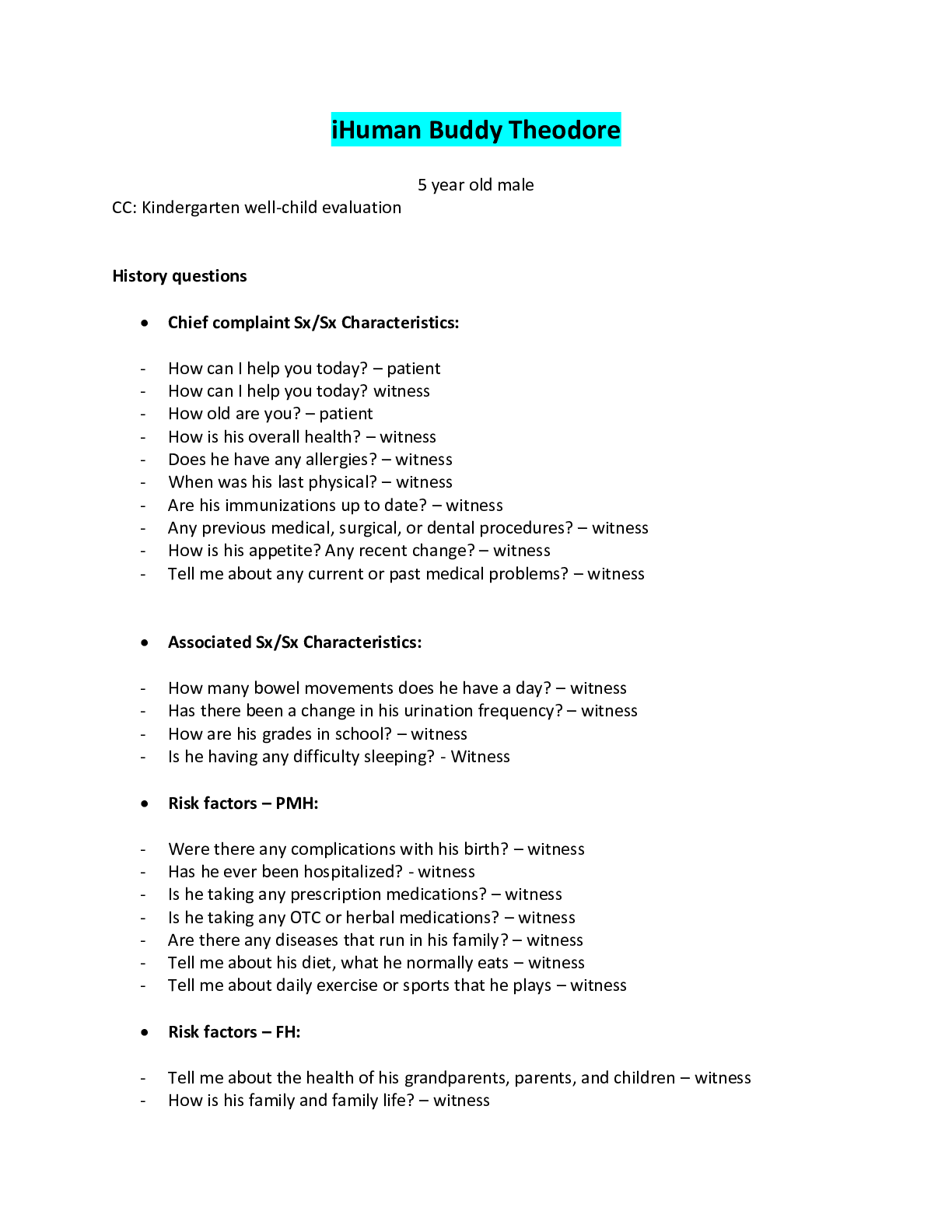

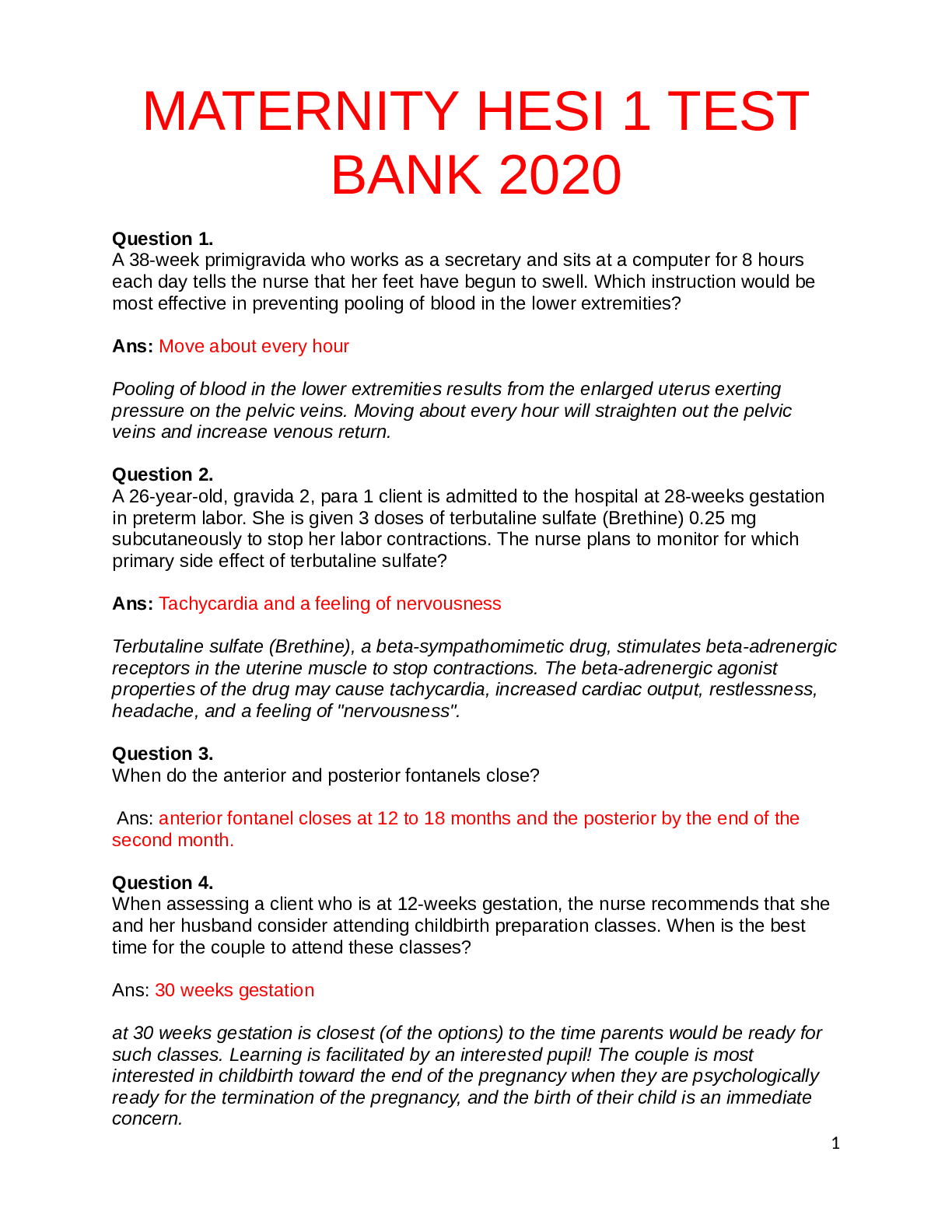

.png)


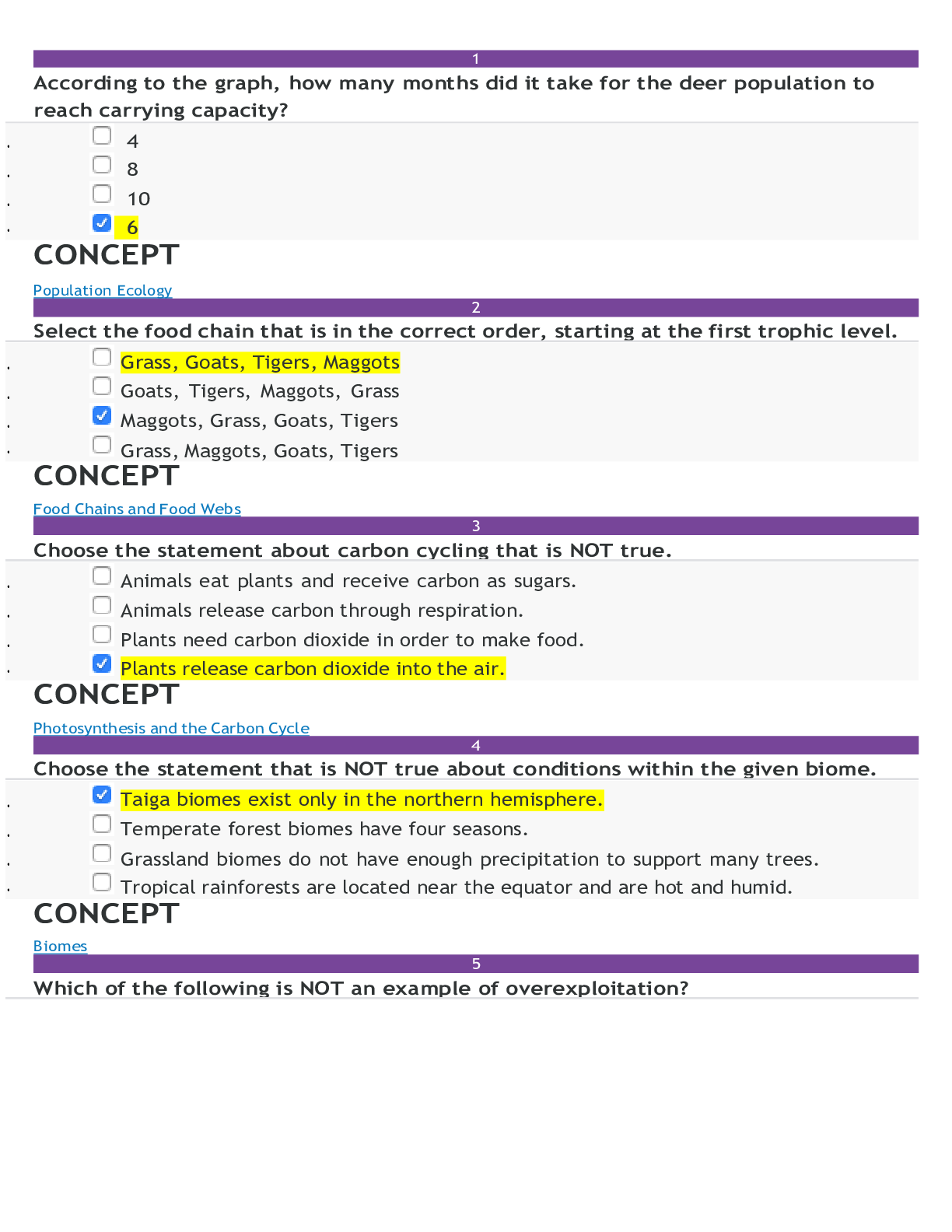
.png)
